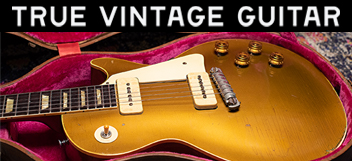I would like to know a little more about the history of the LP classic.
Maybe you guys can jump in, or correct
It started in 1990
was very much a re issue of a 1960, but not entirely.
the original classics were more expensive/better than the standard of
that time.
it featured vintage appointments such as ABR bridge, thin binding
deep dished 2 piece tops and small headstock.
The "model" description on the head stock make these more collectable?
what happened after 1993?
please continue:salude
Maybe you guys can jump in, or correct
It started in 1990
was very much a re issue of a 1960, but not entirely.
the original classics were more expensive/better than the standard of
that time.
it featured vintage appointments such as ABR bridge, thin binding
deep dished 2 piece tops and small headstock.
The "model" description on the head stock make these more collectable?
what happened after 1993?
please continue:salude



